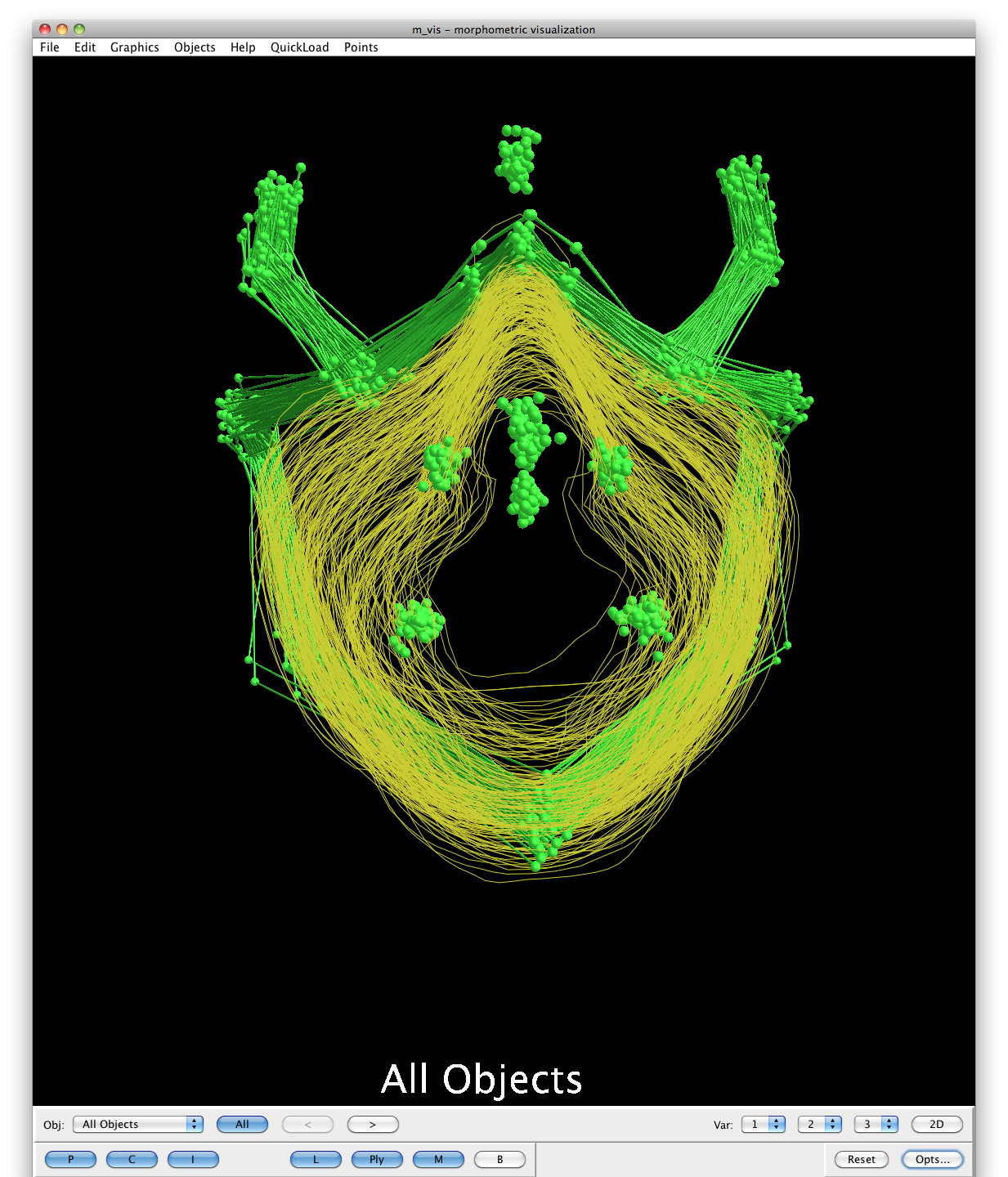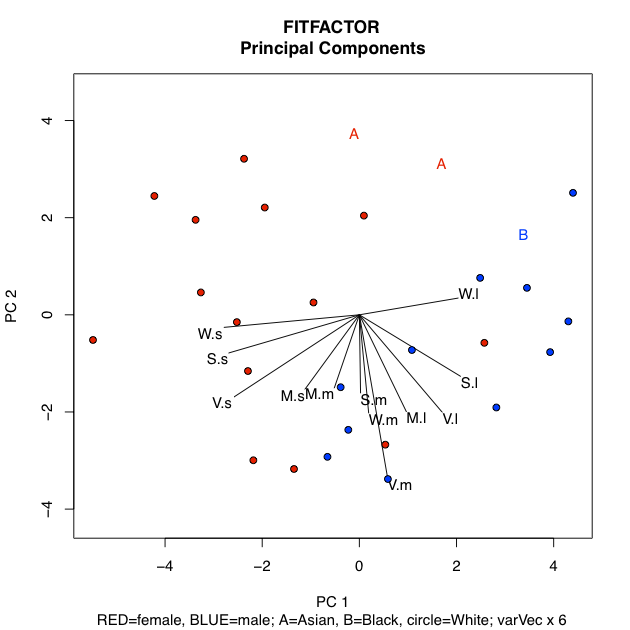The Morphometrics Lab
Department of Scientific Computing
The Florida State University

The field of morphometrics is concerned with the analysis of shape and form (shape+size). Shape is defined as the set of geometric properties of an object that are invariant to position, orientation, and scale (1). Often scale is sequestered in a separate variable and reincorporated into an analysis to examine the totality of variation in a population of specimens of interest or associations of shape variability with size (allometry).
Morphometric analysis has made and continues to make important contributions to studies in biomechanics, ecology, evolutionary biology, anthropology, medicine, industrial safety, and many other research areas.
Analytical methods include the application of the statistical analysis of traditional linear measurements and attributes and, of increasing importance since the late 20th century, Geometric Morphometric (GM) methods that emphasize the fidelity of geometric information and allows the results of multivariate analyses to be summarized in compelling graphical displays and reconstructions.

The denizens of our lab are interested in all aspects of morphometric research including theoretical morphometrics, the development of morphometric software, and the application of morphometric analysis to a number of problems. Our research is often collaborative in nature joining with researchers who have specific problems to address those issues in general ways to produce tools of use to researchers across a wide spectrum of specialties. These collaborations span research from the Marine Lab to the Marine Corps (2).
(1) Slice, DE, FL Bookstein, LF Marcus, and FJ Rohlf. 1996. A Glossary of Geometric Morphometrics. In Advances in Morphometrics, 284:531D551. NATO ASI Series Series A: Life Sciences. New York: Plenum Press.
(2) Our current, primary military collaboration is with the Natick Soldier Systems Center of the U.S. Army (link), but it involves problems and data including the Marine Corps. We wanted to take advantage of the repetition and alliteration of the word "Marine".
